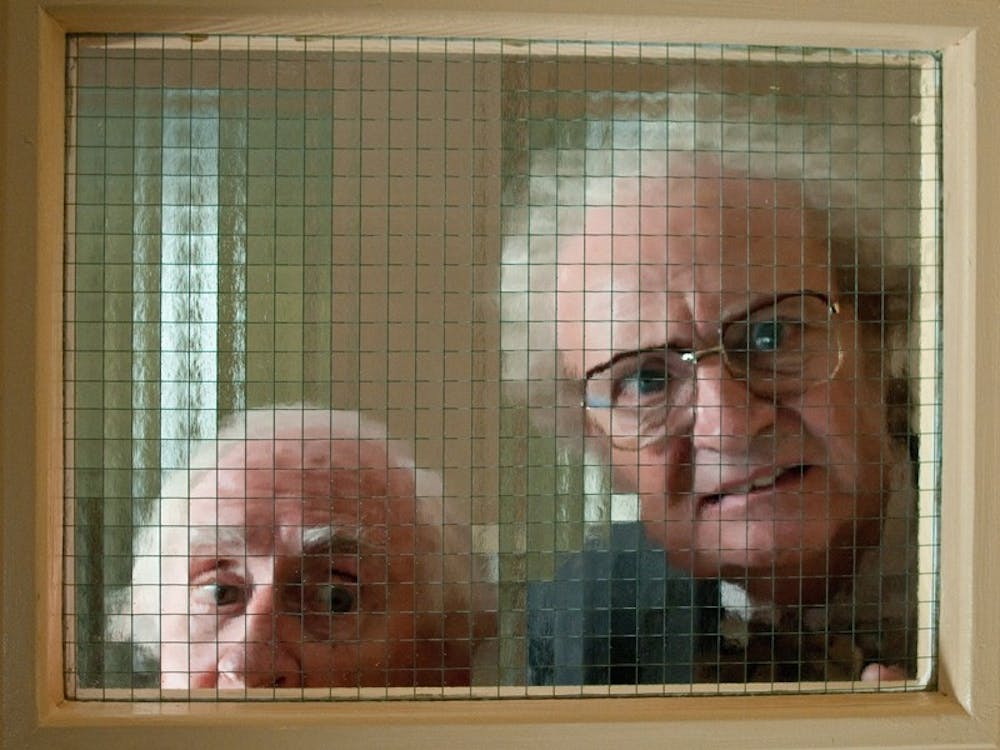Philosophical film weaves together multiple stories, time periods in adaptation
Oh, where to begin with “Cloud Atlas?”
Let’s start with David Mitchell’s complex book of the same name, a book that was deemed too complex to put onto film. But considering the material, the adaptation predictably attracts the sibling directors Lana and Andy Wachowski, who made science-fiction history with “The Matrix,” like a moth to the flame.
I have not read the novel, but watching the film has shown me that co-director Tom Tykwer (“Run Lola Run”) and the Wachowskis are dealing with some really philosophical material. The novel touches up on the largest themes imaginable, such as how actions have consequences and how people often make choices ranging from kindness and bravery to cruelty and cowardice.
The Wachowski siblings still feel right at home here since the movie can best be described as “The Matrix” and “Blade Runner” meeting “Tree of Life” and “2001: A Space Odyssey.” The visuals are indeed mesmerizing, but there are times within the narrative when audiences will ask themselves questions like “Is that whats-his-name again?” and “How did we get to this point in the story?”
Story-wise, it would be much easier to explain the narrative structure here than the actual narrative. “Cloud Atlas” actually consists of six short narratives set in different time periods from the 19th century to 2500, with most of the actors (Tom Hanks, Halle Berry, Jim Sturgess among others) playing a role within each time period. The Wachowskis and Tykwer divided the directorial duties among each segment, and because of this, some of the segments turn out to be better than others. The two futuristic stories, for instance, feature the Wachowskis at their best artistically, especially the one taking place in futuristic New Seoul, South Korea. In one of his numerous roles, Sturgess plays an Asian revolutionary that fights with a “fabricant,” or a clone that acts as a fast-food server, who rebels against the system that created her. It’s during sequences like these when the polarizing and beautiful cinematography comes into play.
Of all the cast members, Hanks and Berry present the most variety. Hanks plays everything from a 19th-century doctor to a 21st-century belligerent Irish author to a 24th-century post-apocalyptic tribesman, while Berry’s roles range from a San Francisco reporter to otherworldly traveler to a futuristic Asian male doctor. You really have to give props to the amount of makeup effects in this project, work that the Academy should no doubt take notice of.
After introducing these six settings, there’s an overlong attempt at explaining how these stories are connected, and the connections range from a comet-like birthmark shared by a certain character in each period to some record left in the previous time to be discovered in the next. However, these stories are connected spiritually more than literally, as one of the movie’s overall messages refers to how every life is connected from “the womb to the tomb” (as the movie puts it).
This may not be the most well-handled film of the year, but it certainly is the most ambitious with its nearly three-hour running time and over $100-million budget, making it one of the most expensive independent films ever made.
Considering how complex and pseudo-intellectual the movie is, it’s tough to grasp how mainstream audiences will be to absorb this film without laughing at how self-indulgent it all is.
For those average moviegoers, “Cloud Atlas” can indeed be maddening as the directors cut back and forth among stories in a fashion similar to “Mr. Nobody” (2009).
It’s understandable that directors are trying to establish some form of connectivity among these stories, but it’s hard to capture the emotionality here when too much focus is placed on keeping up with the story.
If this was apparently supposed to be an enlightening experience for moviegoers, then the jumbling of the different segments should have been handled better.
The entire structure of the film plays out like pieces of a jigsaw puzzle laid out randomly on a table, confusing audiences rather than enlightening them.
So far, the movie has generated only $9 million in the box office during the opening weekend, which will most definitely result in the film being a box office bomb.
This begs a question much bigger than anything the movie asks: Why make something so complex for mainstream audiences with such an impossible budget?
It’s almost as if the Wachowskis made this film as a way of challenging those who said it couldn’t be done.
In a way, the movie itself is a complete contradiction of its message that everything is connected.
The jumbled segments really don’t fit together they way they should, and the beautiful visuals just don’t match the emotionless payoff.

